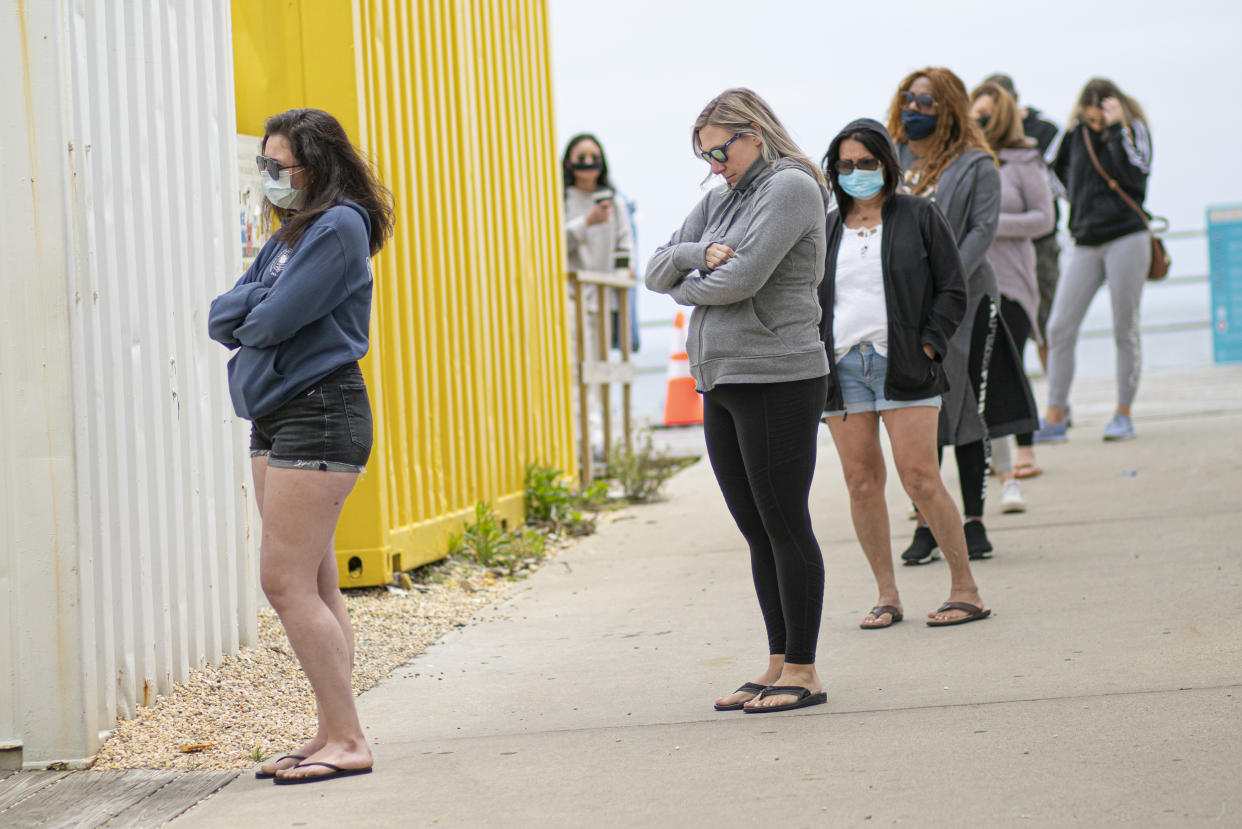Fear the 'toilet plume'? Why experts say flushing in a public restroom may not pose a 'major risk' for COVID-19

As if going out in public isn’t anxiety-provoking enough for many people these days, a new study shows that flushing a toilet in a public restroom may increase your risk of being exposed to aerosolized particles containing SARS-CoV-2, the virus that causes COVID-19.
The study, which was published in the journal Physics of Fluids on Tuesday, ran several simulations to try to determine how far aerosolized particles could spray after a flush. The study shows how water rushing into a toilet bowl during a flush displaces air in the bowl, creating a vortex that moves upward. The force of the flush pushes out approximately 6,000 small droplets of liquid that was in the toilet bowl, along with aerosolized particles.
Different methods of flushing can send anywhere from 40 to 60 percent of the particles above the toilet seat, sometimes spraying them as high as three feet.
The concept of particles shooting into the air after you flush isn’t new – it’s a phenomenon known as a “toilet plume.” But, as the study’s authors point out, it’s concerning in the age of COVID-19.
Video: Is It Safe to Use a Public Restroom During the Pandemic?
Research has found that SARS-CoV-2 can attach itself to receptors in your gut, where it can cause symptoms like diarrhea and vomiting. SARS-CoV-2 has also been detected in toilet bowls and sinks in rooms where COVID-19 patients have been isolated. So, in theory, if someone had COVID-19 and used the bathroom before you, there is a chance particles from their fecal matter or urine could be forced out into the air by the plume.
Whether you can actually get infected with COVID-19 this way remains to be determined, but there are some things to know about the toilet plume and your COVID-19 risk.
First, what is a toilet plume?
A toilet plume is what happens when the force of a toilet flush sprays tiny particles into the air, Dr. Amesh A. Adalja, senior scholar at the Johns Hopkins Center for Health Security, tells Yahoo Life. Those particles can contain urine, feces and anything else that was in the toilet bowl – including germs and bacteria – into the air. “Whatever might be in the bowl can disperse,” Adalja says.
The toilet plume hasn’t been definitively linked to any illness. “We don’t know that toilet plumes have been the source of any other infection,” William Schaffner, an infectious disease specialist and professor at the Vanderbilt University School of Medicine, tells Yahoo Life. “It’s theoretical.”
Can you get COVID-19 from a toilet plume?
It’s possible, Dr. Adalja says, but he isn’t overly concerned. “I don’t think it’s a major risk,” he says.
When someone flushes the toilet and aerosolized particles shoot into the air, they typically fall to the ground or on surrounding surfaces pretty quickly, Schaffner says. “Obviously, there are situations where you enter a public restroom just after someone has left but, for the most part, you usually go into a stall after it has been empty for a while,” he says. “Even if you use a bathroom right after someone has left, I still think the risk is very low.”
Keep in mind, too, that when you flush the toilet, you’re exposing yourself to your own toilet plume, Adalja says. Technically, there could be bacteria and viruses left in the bowl from the person who used the toilet before you, but “it’s not something I would spend a lot of time worrying about,” he says. Particles from the toilet plume can land on common-touch surfaces but, if you’re washing your hands well after you use the bathroom, this shouldn’t be an issue, he says.
As for people flushing near you, Adalja says the stall partitions should offer protection. “It would have to be a pretty powerful plume to be able to go up, above a partition, and then come down on you,” he says.
Finally, while SARS-CoV-2 has been detected in feces, Schaffner says it’s unclear right now whether the virus is actually alive in feces. And, he says, if it’s not living, it can’t infect you.
Is there anything you can do to lower your risk?
If you’re especially concerned about this, Adalja recommends lowering the toilet seat lid before you flush, if there is one. You can also try using a stall that was previously empty, instead of entering one right after someone has left, Schaffner says.
And, again, washing your hands is crucial here. As for more extreme measures, like holding your breath when you flush, Adalja says that’s really not necessary. “We don’t need people fainting in the bathroom,” he says.
For the latest coronavirus news and updates, follow along at https://news.yahoo.com/coronavirus. According to experts, people over 60 and those who are immunocompromised continue to be the most at risk. If you have questions, please reference the CDC’s and WHO’s resource guides.
How to maintain your physical and mental health during the pandemic
Taking care of a loved one with COVID-19? Here’s how to stay healthy
Q&A with Dr. Kavita Patel: How to keep your family safe and maintain your mental health
Read more from Yahoo Life
Want daily lifestyle and wellness news delivered to your inbox? Sign up here for Yahoo Life’s newsletter.



